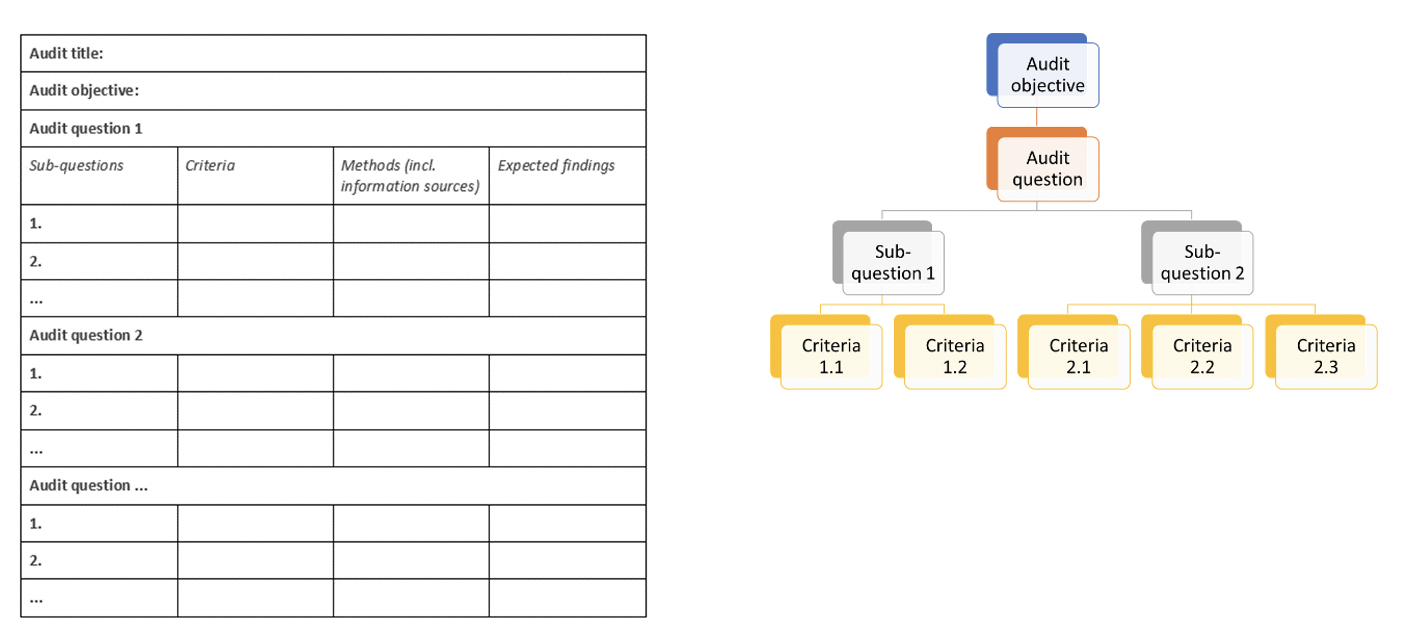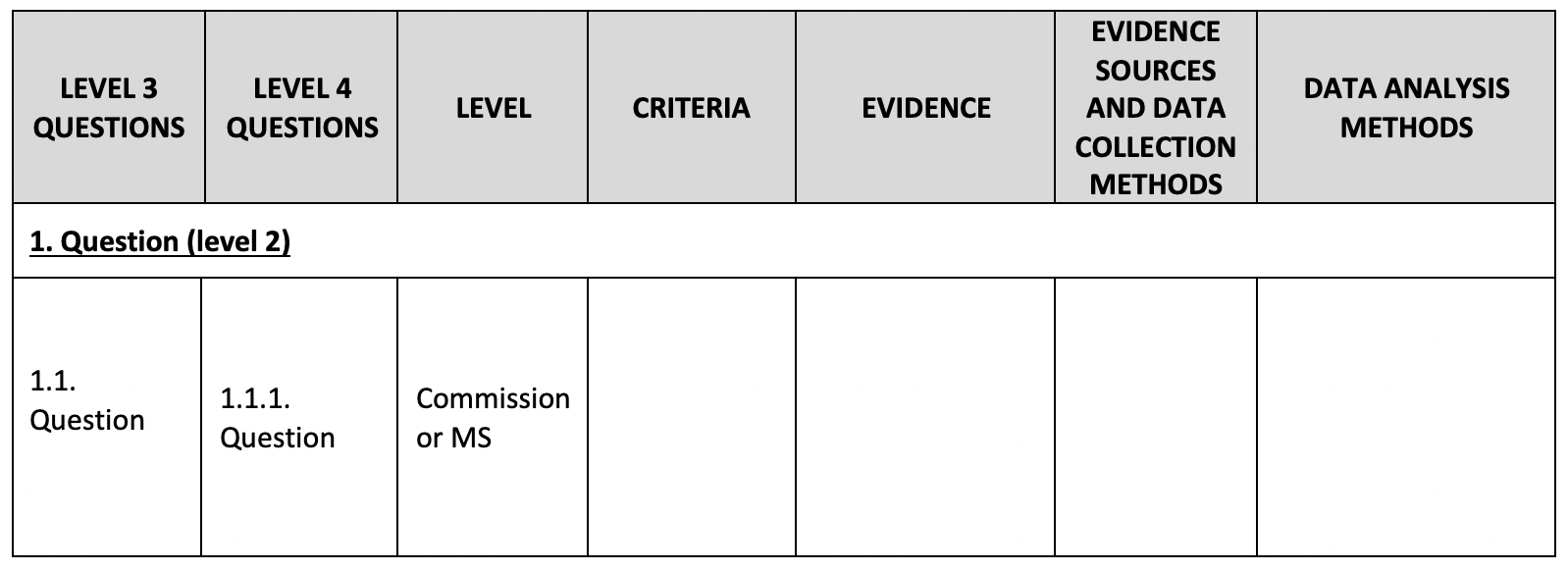
MOOC: Introduction to environmental auditing in the public sector
3.1. Audit Design Matrix
Listed below are the key elements to consider when designing an audit:
- What is the objective of the audit?
- What do we want to find out?
- What questions must be answered in order to obtain the audit objective?
- How can we measure performance? What are the criteria?
- Are there relevant national standards/criteria supporting the audit objective?
- Can we find international good practices?
- Can we compare different entities with one another?
- What information do we need? What is the evidence?
- What methods can we use?
- Where are the data located and how will they be collected and analysed?
- What do we expect to find?
- What conclusions can we draw?
For practical reasons, it is useful to assemble these elements into one table, which is often referred to as an Audit Design Matrix (ADM) or an audit question/pyramid tree – a tool commonly used in the audit planning phase.
The main elements of an ADM are usually audit questions, sub-questions, (sub-sub-questions), criteria, information sources, methods and expected findings. Other elements can be added to an ADM – for example, audit risks, possible recommendations and required audit resources.
SAIs arrange their ADMs differently. Usually there is good reasoning to choose one or another format, it cannot be said that one ADM is better rather that it is more suitable for given SAI. Examples of an Audit Design Matrix and question-trees:

Examples of ADM headers:



The main components of an ADM are explained in the following sub-chapters.


